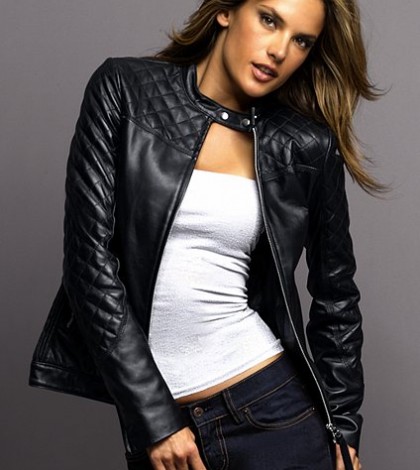Popular culture can make it difficult to know where anything truly came from. Think Elvis Presley in his white PVC and slick-back hair and you rarely think of a chain gang, singing in rhythm to the swing of the sledgehammer. Hard labour formed the origins of blues, and subsequently, rock ‘n roll music. In exactly the same way when you think of the biker jacket it is seemingly impossible not to conjure up fiery images of James Dean in 1955’s cult film Rebel Without a Cause, cigarette in mouth and motorbike in tow.
The fashion industry has been selling biker jackets on the back of this rugged, freedom-seeking, rebellion of youth sentiment for decades since. The clean-cut, popularised version of these things was merely created to appeal to the teenagers who could afford it. For all of the posturing of edgy, out-there fashions of the time, the biker jacket’s origins can be traced to the military in both Britain and the United States of America.
Where does the biker jacket come from?
The concept of the biker jacket in America finds its roots in the 1920s and 1930s. Aviator A-1 pre-World War Two Air Corp styled jackets were made with fitted waists, from waxed goatskin or horsehide with mandarin style collars for bikers. One of the first was designed by Irving Schott in 1928 and sold to Harley Davidson in New York for around five dollars. In Britain the story is quite different. The Barbour wax jackets available from www.ebay.co.uk, despite being the first-choice outdoor wear for Prince Charles these days, were the first used by bikers in Britain and, eventually, by Hollywood stars like Steve McQueen.
Rather than influenced by military design or material as in America, the British Royal Navy took inspiration from Barbour and its one-piece racing suit. The Vintage Showroom notes the influence of Captain George Phillips who commanded the HMS submarine Ursula from 1937. Unhappy with the quality of his men’s clothing, Phillips subsequently approached the company and paid them out of his own pocket to produce a two-piece suit of waxed cotton jacket and trousers, the prototype of which was worn by his crew from 1939. The suit became known as the Ursula and was commissioned by the Royal Navy for all of its submarines from 1942.
The Ursula was transformed into the International wax biker jacket which is still in production today. It was used for trial competition and racing by British and American bikers throughout the ’50s and ’60s and has become an iconic piece of British design.
Design features of biker jackets
Typical early biker jackets used the Ursula design of two chest and two skirt pockets and a removable hood, many of which were bought as army surplus and worn by bikers after WW2. The first Barbour International used angled chest pockets as opposed to horizontal, a mandarin style neck, a waist-high belt and no hood. Several of these features remain on modern wax jackets, biker jackets in men’s and women’s models alike.
American-style biker jackets are made from thick black leather and are usually cut in the fitted aviator style, with angled zipper pockets and prominent open collars. These are slightly adjusted from the military style, mainly in materials, but retain some aspects of the earliest designs.
There you have it: ironically, biker jackets that came to be the ultimate symbol of cool, freedom and rebellion emerged largely from the demands of life in the military.
Kathryn Thompson is a lifestyle enthusiast and a mother of three. She loves keeping up with fashion, travel and the latest looks. Her articles mainly appear on lifestyle blogs. You can follow Kathryn on Twitter.

